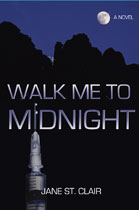Canoa Ranch
By Jane St. Clair
The thing about Canoa Ranch is how big it is. It once spread out over 330,000 acres along the Santa Cruz River about 35 miles from Tucson. At its peak, it was home to over 80,000 head of cattle.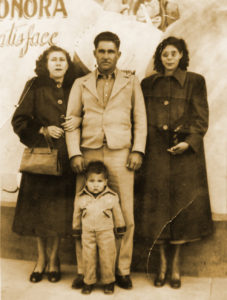 Besides being unusually big, Canoa Ranch was unusually sophisticated. Many of its cattle were purebreds –some even imported from Scotland. Its wealthy owner hired architects to design his ranch house and other matching buildings. It’s not every ranch house that gets a write-up in a fancy architectural journal.
Besides being unusually big, Canoa Ranch was unusually sophisticated. Many of its cattle were purebreds –some even imported from Scotland. Its wealthy owner hired architects to design his ranch house and other matching buildings. It’s not every ranch house that gets a write-up in a fancy architectural journal.
Canoa Ranch peaked when the cattle industry did, between 1940 and 1960. Back then about 80 families lived out there. One of them was the Giljava family, with little Raul shown here with his parents. Raul Griljava grew up to be a U.S. Congressman who has represented his district of south Tucson for over 14 years.
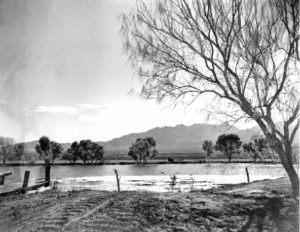
 For decades the Manning family owned Canoa Ranch. The story goes that Levi Manning and one of his fraternity brothers from the University of Mississippi let loose an elephant from a traveling circus. As the elephant terrorized their town, Manning’s mother told him he’d better “Go West, young man” before the police caught up with him. He came to Tucson and became a millionaire as well the town’s mayor. There he built the mansion now known as “Tucson’s Downton Abbey.”
For decades the Manning family owned Canoa Ranch. The story goes that Levi Manning and one of his fraternity brothers from the University of Mississippi let loose an elephant from a traveling circus. As the elephant terrorized their town, Manning’s mother told him he’d better “Go West, young man” before the police caught up with him. He came to Tucson and became a millionaire as well the town’s mayor. There he built the mansion now known as “Tucson’s Downton Abbey.”
Manning also put Canoa Ranch together, which he eventually handed over to his son.
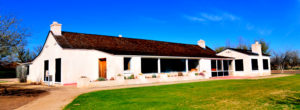
In the 1970s because Americans turned to white meat and vegetarianism, the cattle industry began to decline. Canoa Ranch declined along with it. For years its buildings lay in ruins until the Pima County Park District bought about 5,000 acres to preserve as an historic site. Parks and Recs restored not only buildings and fences, they also filled in the dried-up lake.
Canoa Ranch tells not only the Manning’s story but also those of the Mexican families and cowboys who lived out here. These were the people who did the dangerous work of ranching in what can be a hot cruel county. The Pima Park District is preserving their homes and lifestyles as well as the wealthy owner’s.
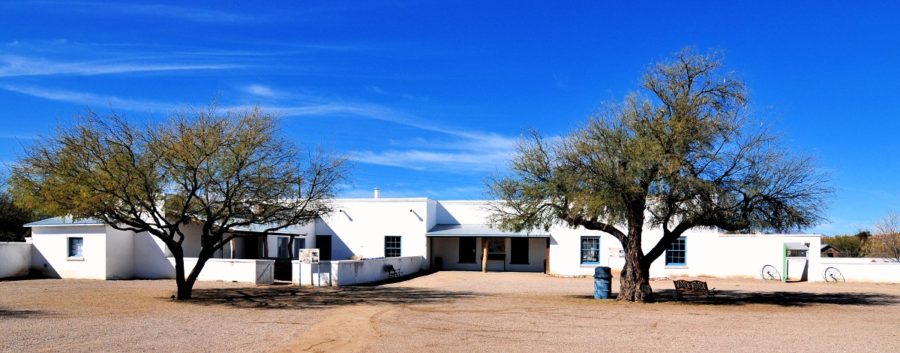
It’s easy to imagine the cowboys and the vaqueros working in this giant corral during round-up, blacksmithing in the huge tack room, building these thick fences from logs during winter, and settling down in the bunkhouse at night.
You can go into the huge tack room and see exhibits of branding irons, saddles and other ranch equipment. Also, you can tour the owner’s house where Manning, who like every other rancher in the world, hung a picture of his horse over his fireplace.
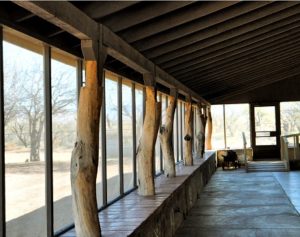 Since some buildings still have old furniture, clothing, dishes and even toys, you can get an idea of life out there without electricity, TV, radio, or even good libraries. I loved the porch made with tree stumps where the foreman and his family would sleep on hot summer nights.
Since some buildings still have old furniture, clothing, dishes and even toys, you can get an idea of life out there without electricity, TV, radio, or even good libraries. I loved the porch made with tree stumps where the foreman and his family would sleep on hot summer nights.
Today Canoa Ranch’s buildings are crisp and white against the bright blue Arizona sky. It almost feels like spending a day by the ocean, all blue colors with bright white sails cutting white angles and lines. Likewise it makes you remember times past and the reasons why we love the Old West.
To plan your visit to the historic Canoa Ranch, go here.
One of Jane St. Clair’s short stories is a finalist in the Tucson Festival of Books fiction contest.

